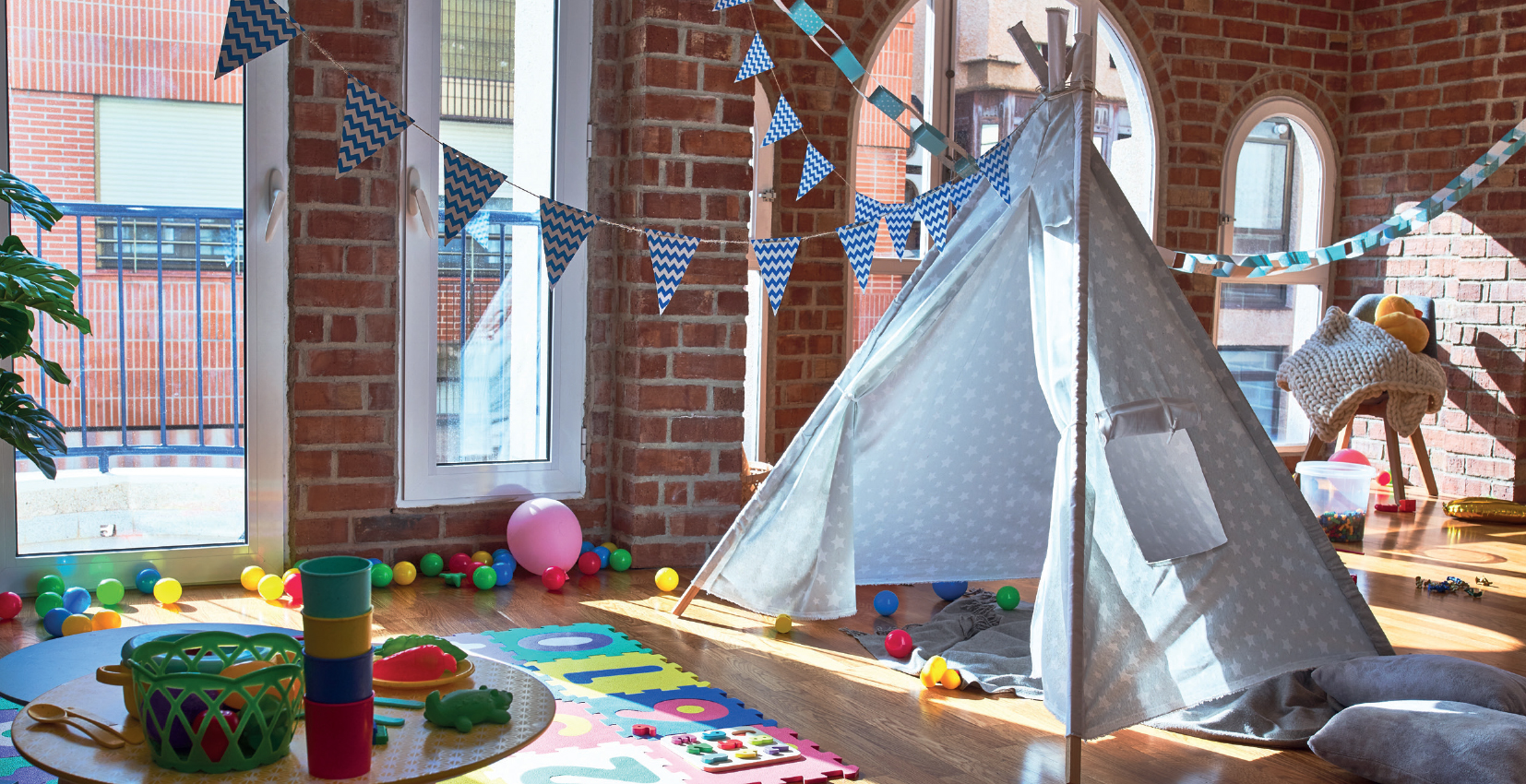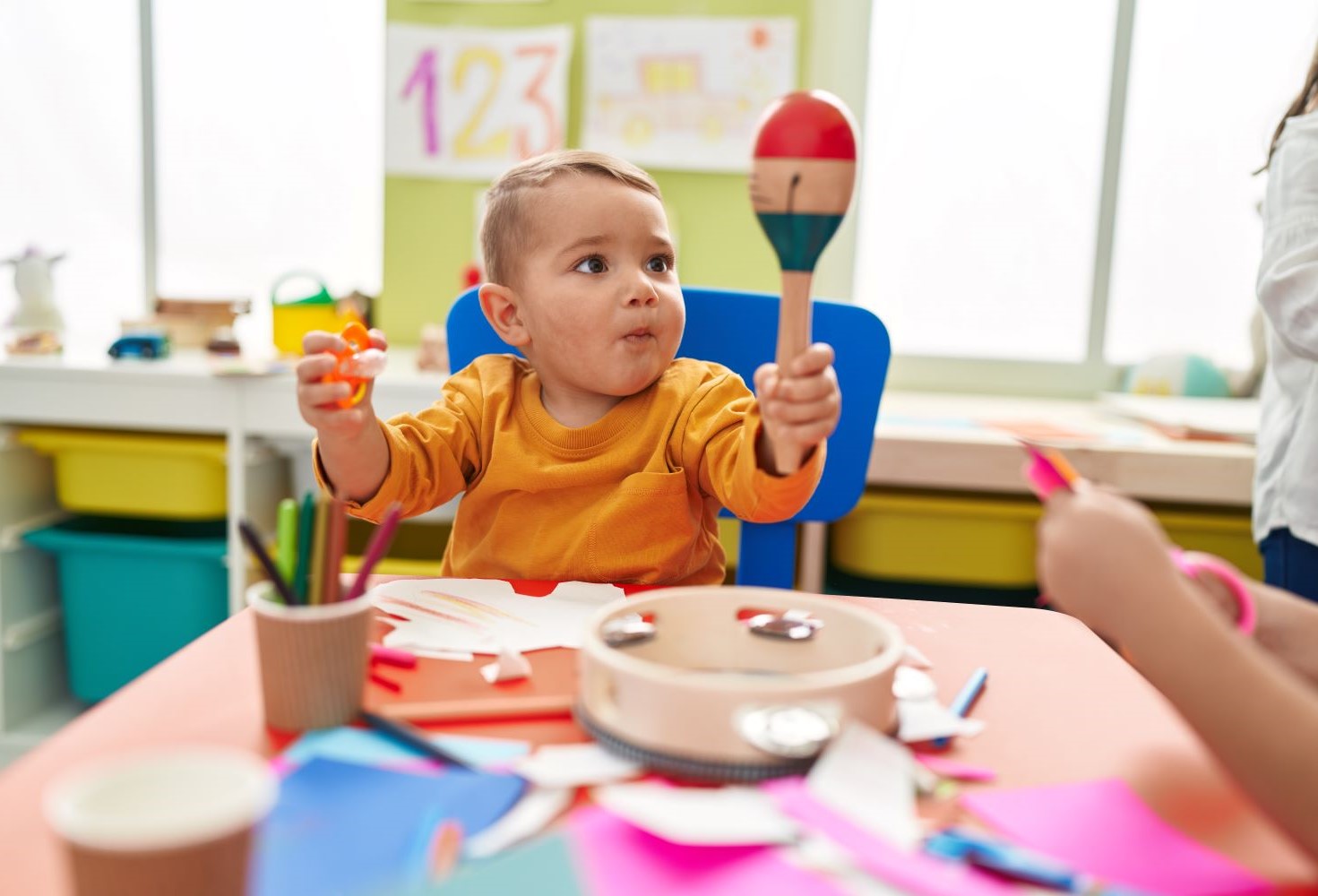
Over the years of being a visiting music practitioner, I have worked with many inspirational Early Years Practitioners (EYPs). Walking into their classrooms often felt like an invitation – marks waiting to be made, toys ready to be touched, small-world areas ready to be animated. But never has it been more inviting than when the whole classroom is based around a story. Stories are how we understand the world at any age, whether creating role plays between toys, watching films or reading. When the story is reinforced by multi-sensory learning, the children often feel comfortable enough to be creative with it. One nursery had the entire room themed as Jack and The Beanstalk, with planting seeds, golden eggs, huge painting spaces for the castle – one child remarked to me ‘I’m in the story!’ while another chose to change the golden goose to a penguin.
Can music also help the children to feel embedded in the story, and comfortable enough to create their own version? And how can we, as music teachers, show EYPs how music can help bring stories to life?
Sound and Symbol
In 2021 I worked with Creative Futures on Sound and Symbol: a project supported by research from UCL into the development of both children’s musical knowledge and their print and word knowledge. Music practitioners worked in nurseries in east London, reinforcing the connection between music and story, and encouraging musical interactions everywhere at any time in the classroom, rather than only occurring at a carpet session. The research showed that both musical knowledge and print and word knowledge improved much faster in those nurseries with the music practitioner than the control. We worked on a single book for an entire term, creating musical activities from what inspired us with our EYP. Successful activities included a simple theme song for the book, laminating pages of the book to be found in the classroom (laid out with musical instruments to encourage playful, musical versions), and creative sound-making activities with other sensory play.
The research found that adding music to the book allowed for increased joyful repetition for the children, and it also allowed them to join in. As they then had a base of understanding, they could better understand changes in the form of introduced anticipation, humour or choosing their own variations.
In the nurseries we worked in, many children were not yet speaking fluently, either because of the difficulties of learning English as a second language on arrival at nursery or because their speech was still developing. Just as all beloved books for this age-group have beautiful pictures to aid understanding, adding music to the story allowed all children to understand with increased equity, whether they knew all the words or not.
Using sounds as story
Working with stories in the Early Years is largely about giving the children a little mystery to solve confidently. I often deepen musical understanding by removing the words. I use a sung refrain with the words ‘Can you make a noise like this?’ and make a noise which they all copy. As well as accurate copying being useful for atmospheric sounds, which is the first stage of phonics, I begin to tell a story through the sounds. We start with something familiar, like getting ready for the day: getting up, brushing teeth, and so on. If anything doesn’t make a sound, such as buttoning a shirt, I make up a musical representation – I’ve never had a child question it yet.
I often use this to reinforce the children’s memories of stories. Once they have a working knowledge of a story, I might tell it with just this refrain and expressive sounds. If anything seems abstract, I will ask for the recall ‘Oh no, what is that?’, to which the children answer ‘It’s the big bad wolf!’, or similar. I have even asked before the sound, for example, ‘What did the second pig build his house out of?’, and the children can choose the sound for ‘sticks’ once they have recalled the answer.
By allowing the children to be in charge of decoding the sounds and making sense of the plot, we are giving them leadership as well as allowing everyone to join in, which is a great equaliser.
Making a theme song
Ask any EYP and they will have undoubtedly looked online for a song which supports their core book; getting the children singing is indisputably good for their wellbeing, deepens their understanding and allows them to have an active role in the story. There is nothing wrong with finding a song online, but they are often too complex and in the wrong key for EY children (they only have a range of middle C to A). Though the children enjoy singing along when the track is playing, they rarely sing spontaneously without it.
So, how do you choose or write a more meaningful theme tune? Keep it as simple as possible. Look through your book – is there a repeated phrase which could be a sort of chorus? Many Early Years books are episodic, with similar events happening several times. If there isn’t a written repeated phrase, is there an implied repeated meaning in these events to which you could add words? For example, in The Tiger Who Came to Tea, he eats ‘all the buns’, ‘all the cakes’, and so on, but there isn’t a repeated phrase apart from that. Could we say: ‘He was a very hungry tiger!’ or similar? It does not need to be any longer than that – the children only need to join in every so often to heighten their attention and obtain familiarity.
Once you have found your joining-in point, choose a melody that you will all remember. Initial singing at this age is often ‘so-mi’ or the major scale, so I stay within these. I have also borrowed melodies from anything catchy over the years, from singing ‘He was too big’ from Dear Zoo to The Addams Family theme. An action can really help with participation and to grow even more neural pathways by doing several things at once.
Quite often the message is subverted at the end of an Early Years book. For example, after being chased by all the characters, The Gingerbread Man is eventually eaten, and at the end of Dear Zoo, the pet is finally right after being wrong many times. If your theme tune doesn’t work at the end, that’s absolutely fine: you can choose not to sing it, change the words, or do a different activity at that point (or, dare I say, it doesn’t have to make complete sense every time if it’s enjoyable for everyone).

Taking story time off the carpet
Inspired by classrooms kitted out as the inside of a story, I have tried to tie music into these freer experiences so that the story is aurally embedded in the children’s play as well as visually.
Nursery classrooms frequently have small-world areas where the children can re-enact stories or topics with figures and props. By adding sound-makers to these areas, the aural world can be as rich as the visual – rain sticks and ocean drums as well as sea creatures for The Rainbow Fish; authentic African instruments such as djembes or shekeres as well as fruit for Handa’s Surprise.
During Sound and Symbol, we found that by laminating pages from the book in free-flow areas, the children gained confidence in retelling the story in a musical way, allowing them to adapt the retelling to their own interests.
Staff could even create an exciting aural world by making a playlist of recorded music relevant to the story, to which the children could move or draw freely. Being inspired merely by atmosphere is key here – for Jack and the Beanstalk, for example, you might choose a piece of gentle harp music for the giant to sleep to, and a loud, dramatic piece for him to wake up and stomp.
This freer approach to story in the classroom can encourage children to begin singing and playing their own stories and songs, which a sensitive adult can capture in a video, an observation, or even a conversation. This approach endorses their natural creativity and readies them for a lifetime of ownership of music and stories.








